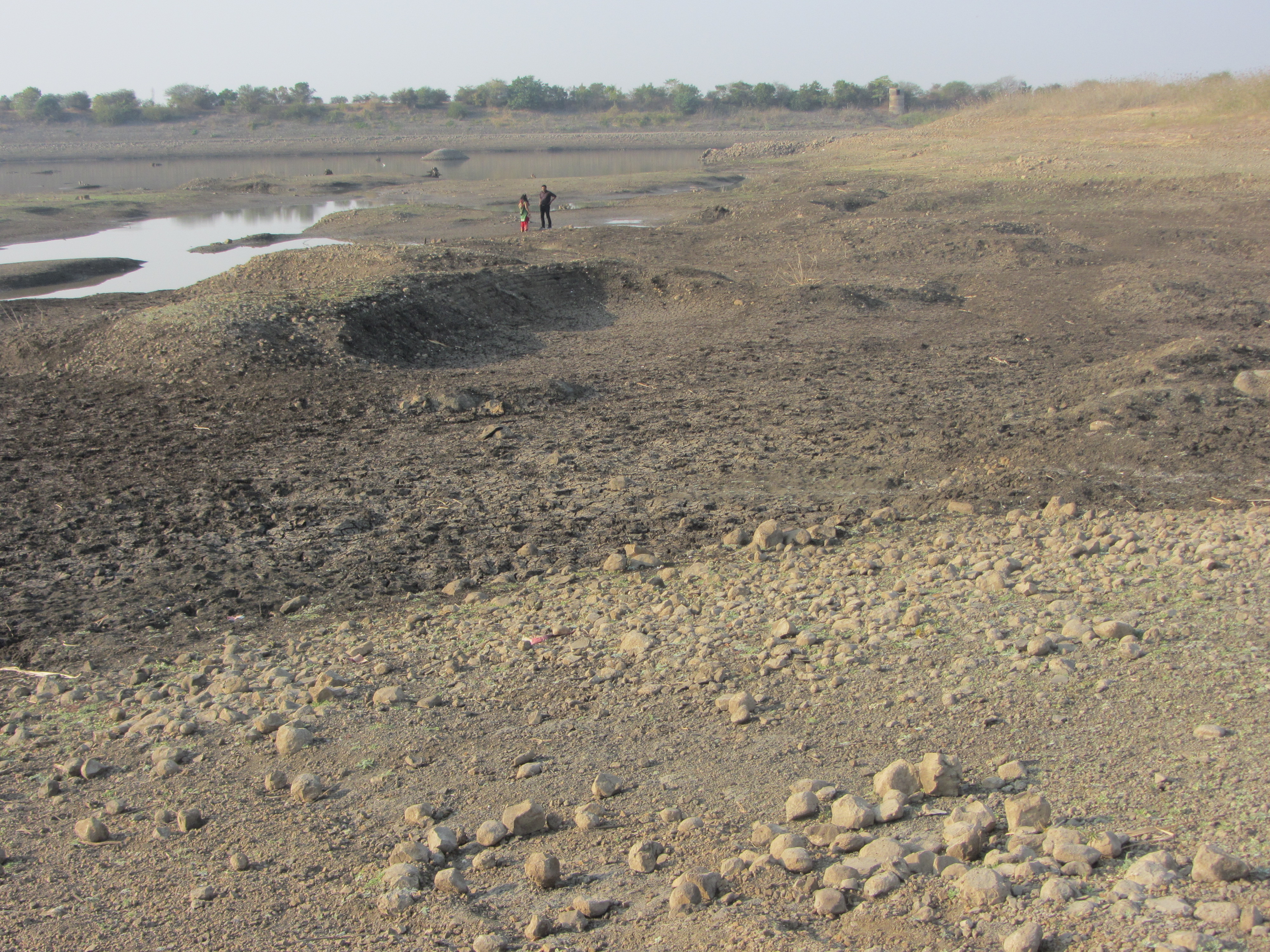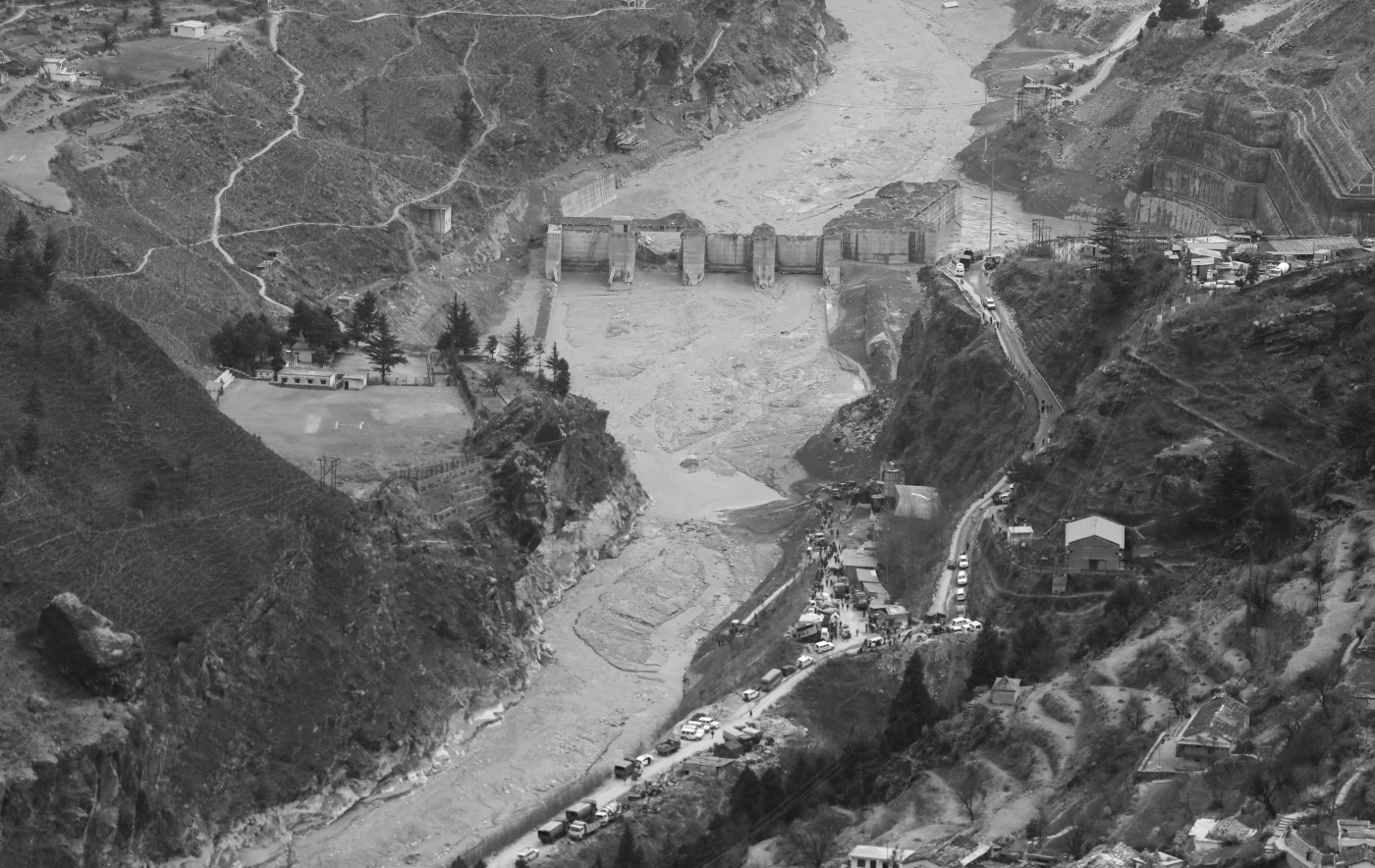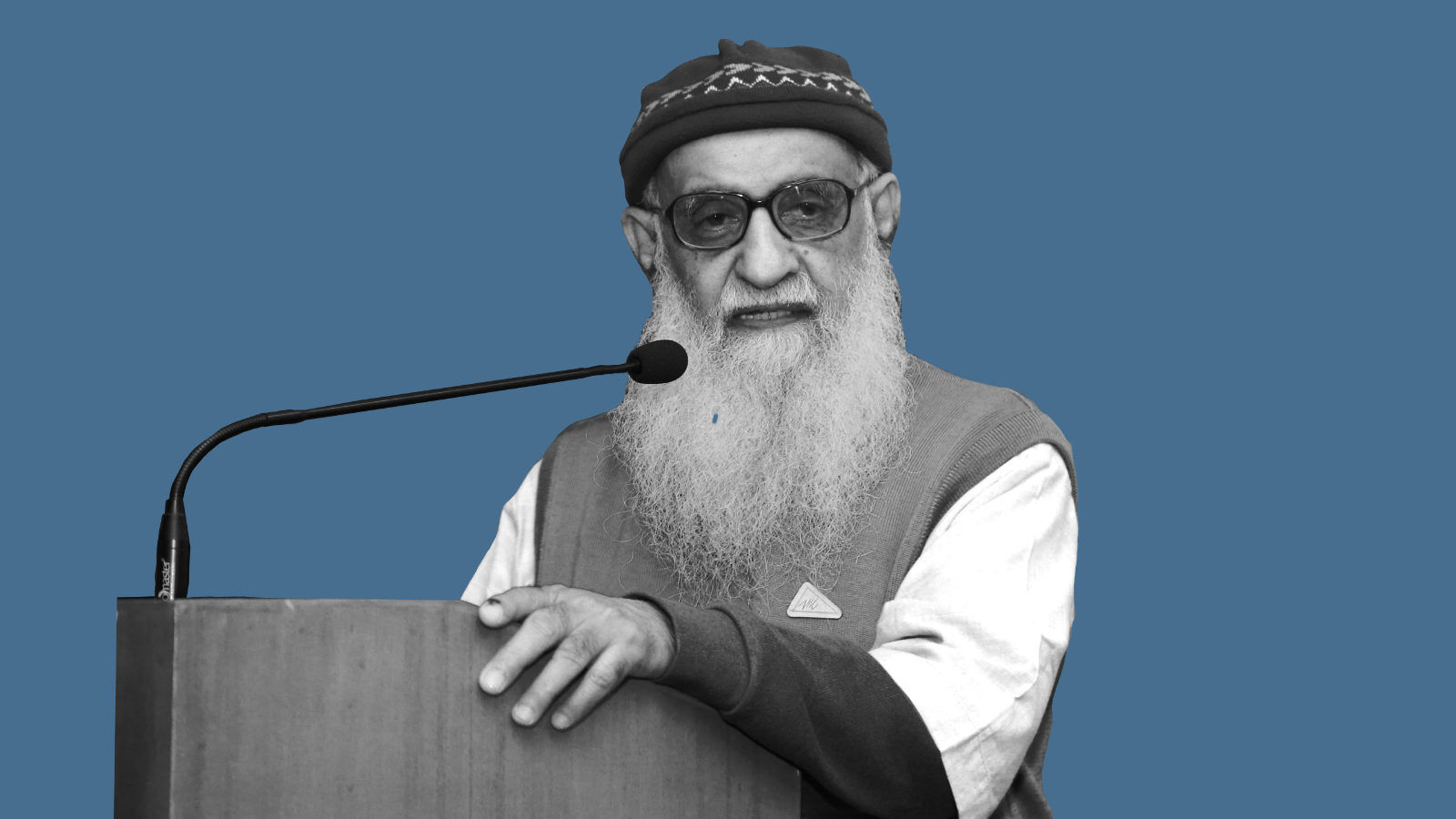The winter crop acreage across India has gone down substantially because of a lack of rain, but especially in Marathwada region

Gothala Lake on the outskirts of Lingdhal village in Maharashtra has gone almost dry in the absence of rains. Photo: Nivedita Khandekar
Farmers in several districts of the western Indian state of Maharashtra are facing a bleak rabi crop (winter crop) due to a lack of rainfall. Small and even large landholding farmers in the state’s Marathwada region as well as surrounding areas are facing this problem. Low rainfall has forced many farmers to leave their land empty, except those few who have dedicated irrigation systems or whose crops are less dependent on an abundant supply of water.
The two percolation tanks in the region, including one spread over 20 hectares, have gone almost dry. Farmers in nearly 10 villages surrounding it are suffering this year.
Dhananjay Reddy Patil, a distressed resident of Lingdhal village in Latur district, said: “By November, all the kharif crop [monsoon season crop] was stored or sold. By this time of the year, even the rabi crop is at its peak. The farmland is full … but our land is empty, without any rabi crop because of lack of water. Each year, we have chana [chickpea], wheat, jowari [sorghum] … there is nothing this year. Look at these dry, barren fields.”
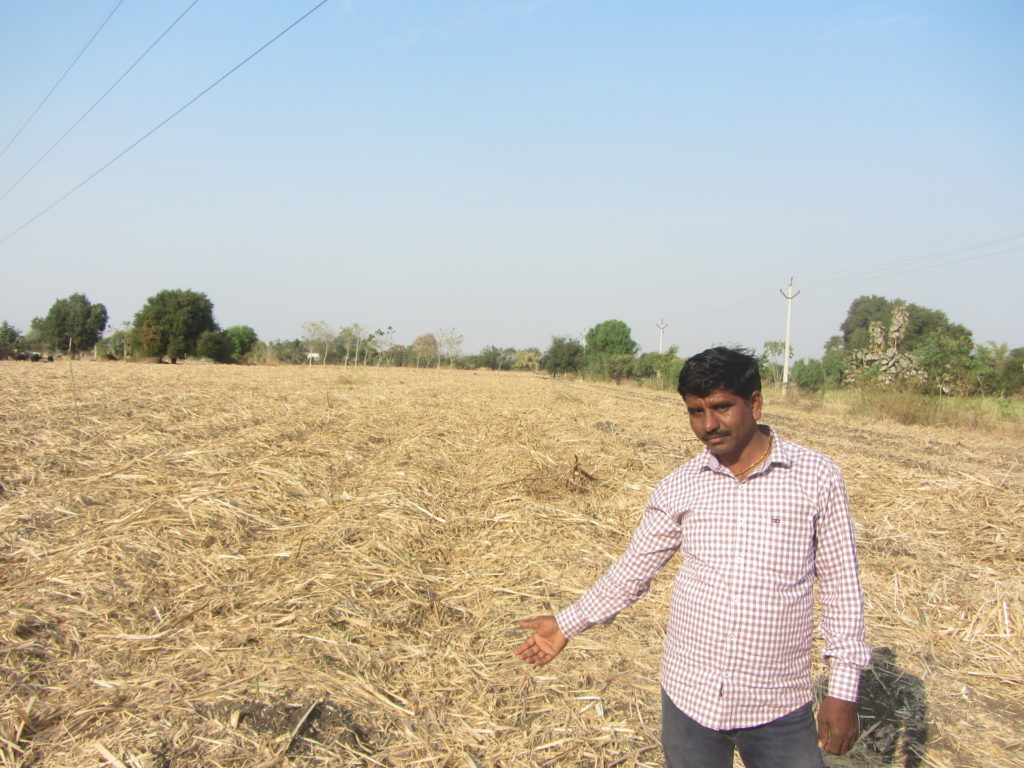
Most of Marathwada consists of a plateau area with low and highly variable rainfall. This year every second farm plot was seen left un-sown as the farmers have no water.
The landscape undulates with deep or shallow black cotton soil in places and barren rock-filled stretches at other. The India Meteorological Department in its annual wrap for 2018 said many areas across Marathwada received scant rainfall toward the end of the southwest monsoon (June-September) this season. This is the principal rainy season for agriculture, but more trouble was in store as the 2018 northeast monsoon season (October-December) rainfall over the country was substantially below normal (56% of LPA, or long period average) as well.
The near-absence of northeast monsoon rain has had an obvious fallout. The overall rabi acreage across India has gone down substantially because of lack of rain.
The Maharashtra state government led by the Bharatiya Janata Party (BJP) put in place a program of decentralized water-conservation activities termed Jalyukt Shivar Abhiyaan (campaign for water-adequate farm area) that included deepening and widening of streams, construction of cement and earthen stop dams, work on nullahs (riverbeds or ravines), and digging of farm ponds. The government had aimed to make 5,000 villages free of water scarcity every year and declare the state drought-free by 2019.
But with monsoon rains playing truant in 2018, the Maharashtra state cabinet on October 30 declared drought in 151 tehsils (administrative areas) of 26 of the state’s 36 districts. Of these 151 tehsils, 112 are affected by severe drought while 39 are facing moderate drought.
Marathwada is the worst hit.
The situation is reflected in the water availability in 91 major reservoirs across the country. Maharashtra is one of the 10 states that have seen less storage than last year for the corresponding period, the others being Jharkhand, Odisha, West Bengal, Tripura, Gujarat, Uttar Pradesh, Andhra Pradesh, Telangana and Kerala, despite unprecedented floods during monsoon.
Administration, NGOs gear up for drought
Since 2015, the region has had a Mission Mode approach for water conservation works under the Jalayukt Shivar Abhiyaan. Further, an additional 22,000 hectares were irrigated under the “More Crop Per Drop” component of the Pradhan Mantri Krishi Sinchayee Yojana, a central program promoting minor irrigation with technical interventions.
Latur district’s superintending agriculture officer, Santosh Alsi, told Asia Times: “Water-conservation efforts created ample capacity that served us well for the last two years when the rainfall was good. But unfortunately, this year we have had [much] less rainfall. What is the use of your vessel if there is no water?”
During peak summer the water bodies and reservoirs in the district go completely dry and hit dead storage, the administration then allows farmers to plant fodder for their livestock in the bed of the water body at a nominal rent of 1-2 rupees and in extreme conditions runs cattle camps.
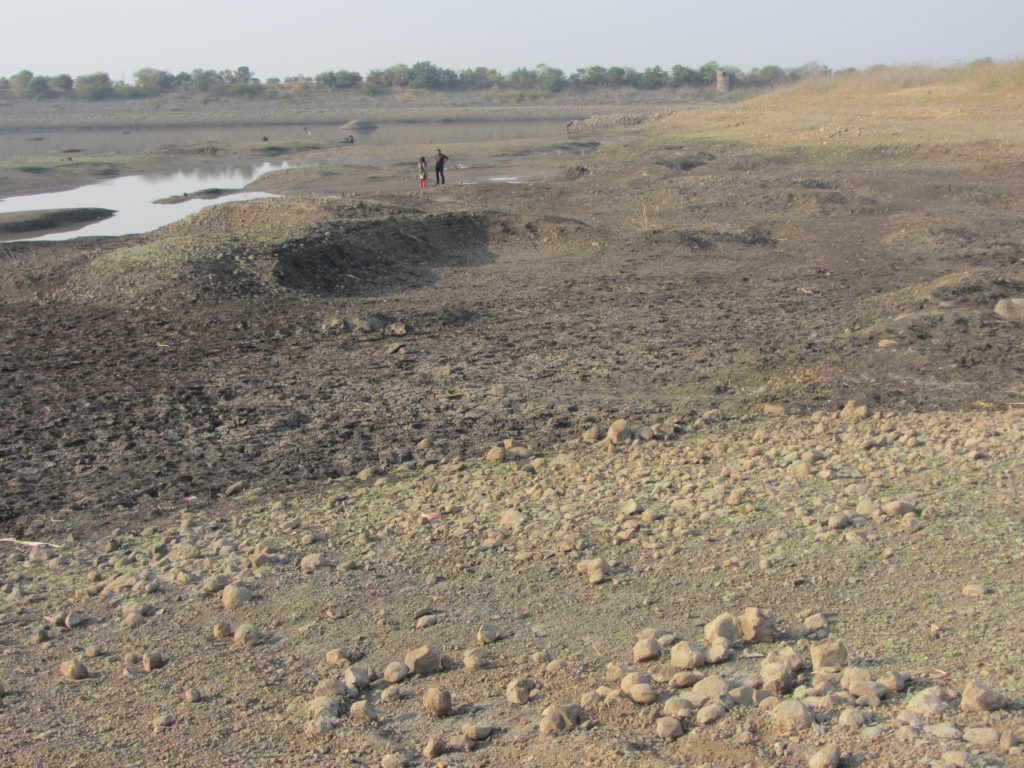
Mayank Gandhi, a former businessman turned politician (he contested the previous election on the Aam Adami Party’s ticket from Mumbai), disputed the efficacy of government scheme, saying: “The extent of difference that Jalyukt Shivar Yojanaa would [make] was overestimated.”
Terming this year’s drought situation “terrible,” Gandhi said the lower rainfall in the region was for non-local reasons.
“What needs to be done is, increase tree cover, subsidize drip irrigation up to 80% and subsidize farm ponds in all respects up to 85% even when paying the subsidy amount upfront to the contractor,” he said.
Water level scarce in major reservoirs
But it is not only farmers who are suffering – the situation is equally grim for town and city dwellers.
Deglur, a town in Nanaded district in the Marathwada region, has been rationing water since Diwali in November. Residents get water in their taps every third day, for one or two hours maximum.
With a population of 55,000, the town’s water until the 1990s was pumped up from the Lendi River that skirts the municipality. But with no water-conservation measures, increased urbanization and over-exploitation of groundwater, the river is a dry snaking patch for most of the year.
Bhargavi Dikshit, a social worker, said: “This year is tough. We need to brace for severe water shortage. From March, we will get a new timetable for water – once in four days and later, depending on water availability, during peak summer in May, we will get water once in six or eight days.”
Reservoirs across India are facing the same problem. According to the latest government data released on January 18, the water storage available in 91 major reservoirs for the week ending January 17 was just 77.171 billion cubic meters, which is about 48% of the total storage capacity of these reservoirs.
Drought in an election year
With general elections in India approaching, inter-ministerial central teams have visited Maharashtra and six other states to assess the drought conditions. But there has been no further action on part of the central government since then.
With every passing week, the situation gets grimmer across Maharashtra, especially in Marathwada, yet Chhabi Jha, joint secretary of the Ministry of Agriculture, who led the inter-ministerial central team to Maharashtra, said, “We are in the process of finalizing our report.”
Criticizing Prime Minister Narendra Modi, Radhakrishna Vikhe-Patil, leader of the opposition in the state assembly, said: “Modi visited Maharashtra twice in past three months. Last week he also held a rally at Solapur [one of the districts in drought-prone areas] and yet he did not utter a single word about farmers.
“Modi has time to inaugurate projects but not for wiping distressed farmers’ tears,” Vikhe-Patil said in a statement.
The Maharashtra government has demanded 70 billion rupees (US$985 million) as a drought-relief package from the federal government. It has also introduced the Chief Minister’s Relief Fund (Drought-2015) appealing to people to donate for drought relief.
The fact that monsoon rains are a whole six months away and will follow a scorching summer in large parts of India, especially the peninsular areas, the government needs to act fast and allocate funds to prevent water scarcity. But ultimately, the rain gods also need to sing, because otherwise the agrarian crisis will continue in Maharashtra.
This was first published on January 25, 2019 by Asia Times and can be read here
